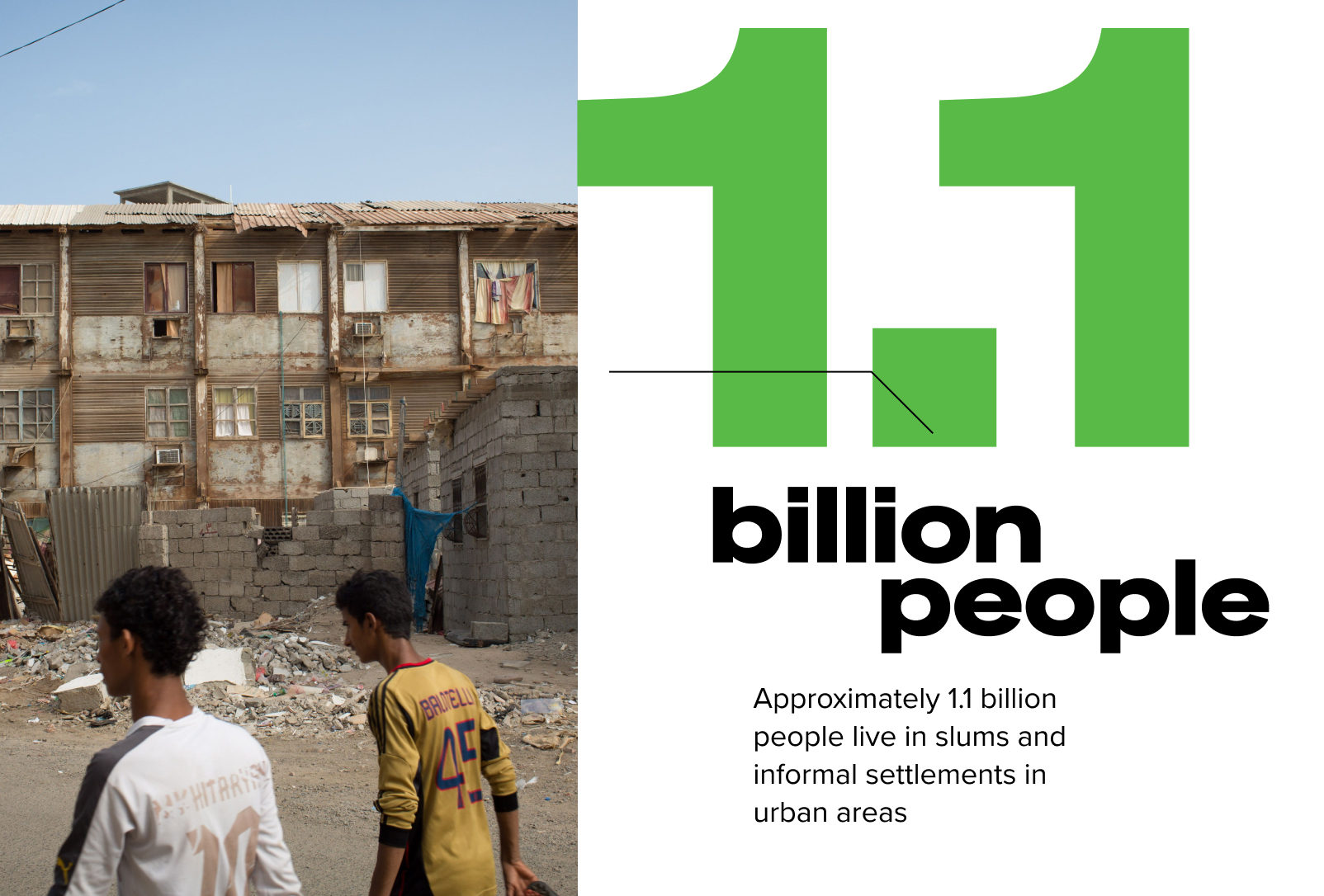Urban kaleidoscopes
Cities are mirrors of global resilience
As the world becomes more interconnected and dynamic, urban settings are taking centre stage as catalysts for prosperity.
Cities, towns and their surrounding areas act as powerful magnets for innovation, culture and opportunities, alluring both talent and investment.
Urban living has already been embraced by more than half of the world's population, and projections indicate that nearly 70 percent of us will live in cities by 2050.
How are urban areas adapting to the ever-evolving global landscape and building resilience with the necessary speed and scale?


Battlefields for a sustainable future
Cities are the economic engines of nations. They generate more than 80 percent of the global GDP. Their powerful networks and machinery foster entrepreneurship and business growth and, in times of economic crisis, their diverse industries, services and labour forces can jumpstart recovery.
Urban areas can also be an inequality trap, with overcrowding, pollution, poor infrastructure and social injustice. In other words, thousands of buildings do not necessarily imply affordable housing, and more employment opportunities don’t always guarantee decent jobs.
Approximately 1.1 billion people live in slums and informal settlements in urban areas, which entrenches poverty and limits opportunities. Whether the city is in the developed or developing world is irrelevant: there is extreme poverty in Kibera’s shanties in Nairobi, Kenya, one of Africa's wealthiest cities, as well as on the streets of London, where homelessness has surged by 21 percent since 2022.


Slums frequently suffer from a deficiency in essential infrastructure and basic services, exacerbating the already challenging living conditions.
Rapid population growth and migration from rural areas is also leading to strain on resources and increased demand for infrastructure and services. To put this in perspective, it’s estimated that cities in developing countries will need US$4.5 trillion to $5.4 trillion in annual infrastructure investments between now and 2050.
Another challenge is making urban spaces liveable without contributing to environmental degradation. Cities consume about 75 percent of energy worldwide and generate 70 percent of the planet’s greenhouse gas emissions, according to the World Bank. Yet, they account for less than 2 percent of the Earth’s surface.
UN Secretary-General António Guterres calls them ‘critical battlefields’ for a sustainable future, where wealth and poverty live under the same roof. But similar to the ever-shifting patterns in a kaleidoscope, cities offer endless mosaics of progress.

Mosaics of progress
Cities have a unique capacity for resilience. In times of crisis, they often are better prepared to mobilize resources, coordinate responses and offer basic services to navigate adversity. Lviv, in Ukraine, is a reflection of this: despite the backdrop of war, the city remains a trailblazer in urban planning and innovation, while providing assistance to displaced people.
Local governance is also instrumental in fostering resilience, ensuring cities can effectively respond to challenges and build back stronger. Somalia’s capital, Mogadishu, is working to substantially improve service delivery, bolster social protection, increase access to housing and employment and implement cash-based interventions, which is vital in a city that is home to 400,000 people living in a state of protracted internal displacement.

Gender considerations in these settings are pivotal for boosting an equitable and inclusive urban environment. A case in point is Mexico City, where the subway reserved seats exclusively for women to shield them from sexual violence and harassment on public transportation. The city is also piloting other initiatives to ensure gender equality benefits not only women residents but the society as a whole.
Urban areas, such as Borhan's neighbourhood in Dhaka, Bangladesh, are crucial battlegrounds in the fight against climate change. Borhan, 70 years old and visually impaired, lives in a community plagued by frequent water pollution and flooding. Now, climate-resilient infrastructure means Borhan and his community can commute and drink water safely.
Integrating innovation into the equation can spark creative ideas, as exemplified by a group of young scientists in Skopje, North Macedonia, who convert waste into renewable bioenergy and even insect-based proteins.
And as populations grow, so does the demand for transport. Urban areas can be a catalyst for shaping cleaner, more efficient and accessible mobility options. Cities such as Batumi in Georgia, Lusaka in Zambia or San Juan Comalapa in Guatemala are already embracing sustainable transportation.
Urban settings have demonstrated their adaptability during times of uncertainty, such as the onset of the COVID-19 pandemic, which had a significant and transformative effect on informal economies and health systems.
In Kampala, Uganda, an e-commerce project initiated an experimental collaboration with informal food markets to maintain supply chains for small businesses, using an app to connect informal vendors with consumers. And Ghana’s capital Accra is addressing health inequalities among urban poor communities while strengthening essential services for future pandemics.
In these vibrant mosaics, positive change knows no limits. Combining these prospects with efforts such as ensuring quality education, enhancing energy efficiency or guaranteeing affordable housing, cities can not only make substantial progress toward Sustainable Development Goal (SDG) 11 but also stimulate greater community engagement and cohesion. Uruguay's Ciudad de la Costa is already putting this in place.

The glocal projection
Since urban areas are mirrors of global challenges, they serve as experimental hubs to identify and apply local solutions that can have global impact.
While there isn't a one-size-fits-all formula for attaining sustainable urban development, the New Urban Agenda offers guidance and strategy. When the urban landscape is well planned and managed, it can be a transformative force to accelerate the SDGs. It emphasizes the idea of localizing solutions, thinking globally and acting locally – essentially reaching a glocal projection.
As urbanization continues to surge, financing the SDGs at the local level is a forward-looking investment that pays dividends in resilience. One key avenue is through public-private partnerships, where local governments collaborate with the private sector on green projects.
Green bonds offer another financing mechanism, enabling cities to raise funds for sustainability projects with attractive terms for investors. Embracing policies such as carbon taxes can generate revenue streams while encouraging sustainable behaviours and reducing traffic congestion and emissions.
Securing funding for social services is also essential to ensure that all residents have critical resources, including healthcare, education or housing, while ensuring gender equity in all dimensions.
Financial resources for inclusive urban planning can promote peace and security in regions grappling with conflict and disasters. This type of investment plays a pivotal role in reinforcing social cohesion by implementing enduring solutions that align with the objectives outlined in the Global Action Plan.
Local governments can play a leading role in sharing funding and policy-related best practices and lessons learned, enabling these exchanges to help other regions and communities tackle similar challenges.
Urban areas hold up a mirror to our commitments and priorities. For them to reflect the future we want, we must effectively advocate for, and put in practice, policies and actions that foster glocal progress and resilience.
And to make that happen, financing sustainable cities is an imperative.


 Locations
Locations


